
|
You entered: Solar System
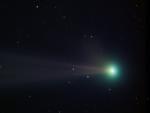 Colors of Comet Pojmanski
Colors of Comet Pojmanski
11.03.2006
Comet Pojmanski flew by planet Earth last weekend on a surprise trip through the inner solar system. Then an easy binocular target for morning skygazers, Pojmanski ultimately showed off a long tail, but it also presented some lovely green-blue hues as gas molecules in its tenuous coma and tail fluoresced in the sunlight.
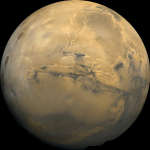 Valles Marineris: The Grand Canyon of Mars
Valles Marineris: The Grand Canyon of Mars
27.03.2011
The largest canyon in the Solar System cuts a wide swath across the face of Mars. Named Valles Marineris, the grand valley extends over 3,000 kilometers long, spans as much as 600 kilometers across, and delves as much as 8 kilometers deep.
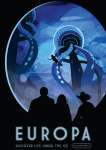 Europa: Discover Life Under the Ice
Europa: Discover Life Under the Ice
1.04.2016
Looking for an interplanetary vacation destination? Consider a visit to Europa, one of the Solar System's most tantalizing moons. Ice-covered Europa follows an elliptical path in its 85 hour orbit around our ruling gas giant Jupiter.
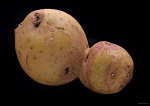 Asteroid or Potato
Asteroid or Potato
1.04.2020
Is this asteroid Arrokoth or a potato? Perhaps, after all the data was beamed back to Earth from NASA's robotic New Horizons spacecraft, the featured high resolution image of asteroid Arrokoth was constructed. Perhaps, alternatively, the featured image is of a potato. Let's consider some facts.
 Cassini Spacecraft Approaches Jupiter
Cassini Spacecraft Approaches Jupiter
11.10.2000
A new spacecraft has entered the outer Solar System: Cassini. Launched in 1997 and bound for Saturn in 2004, Cassini sent back the above image last week while approaching the giant planet Jupiter. Cassini joins the Galileo spacecraft currently in orbit around Jupiter in studying the gas giant and its moons.
29.05.2000
Scroll right to virtually climb the largest volcano in the Solar System. Olympus Mons on Mars measures three times higher than Earth's highest mountain, and has a volume over fifty times greater than Earth's largest volcano. The caldera at the top is over 70 kilometers wide.
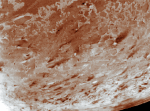 Geysers on Triton
Geysers on Triton
5.08.1995
In August of 1989 NASA's Voyager 2 spacecraft passed by Neptune, the most distant of the solar system's gas giant planets. Its encounter with Neptune climaxed with its closest approach to Neptune's largest moon Triton.
 Hale-Bopp in Stereo
Hale-Bopp in Stereo
4.04.1997
This stereo pair of Hale-Bopp images combines two pictures from slightly different viewing angles. Simulating stereo vision, the difference was generated by the comet's apparent motion as it cruised through the inner Solar System.
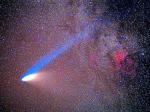 Comet Hale Bopp and the North America Nebula
Comet Hale Bopp and the North America Nebula
3.10.2004
Comet Hale-Bopp's 1997 encounter with the inner Solar System allowed many breath-taking pictures. Above, Comet Hale-Bopp was photographed crossing the constellation of Cygnus, sporting spectacular yellow dust and blue ion tails. Visible on the right in red is the North America Nebula, a bright emission nebula observable from a dark location with binoculars.
 Comet Between Fireworks and Lightning
Comet Between Fireworks and Lightning
29.05.2011
Sometimes the sky itself is the best show in town. In January 2007, people from Perth, Australia gathered on a local beach to watch a sky light up with delights near and far. Nearby, fireworks exploded as part of Australia Day celebrations. On the far right, lightning from a thunderstorm flashed in the distance.
|
January February March April May June July |
|||||||||||||||||||||||||||||||||||||||||||||||||